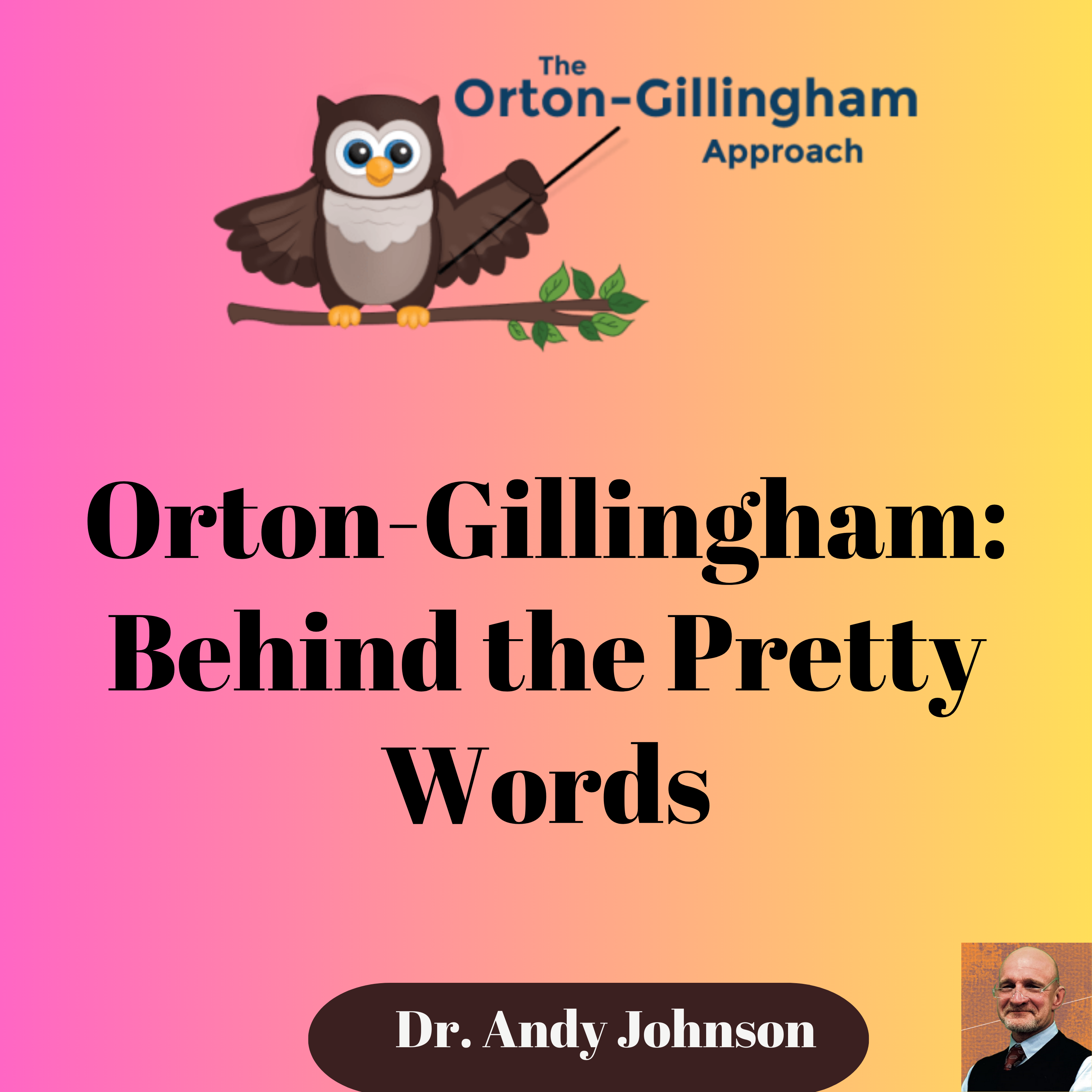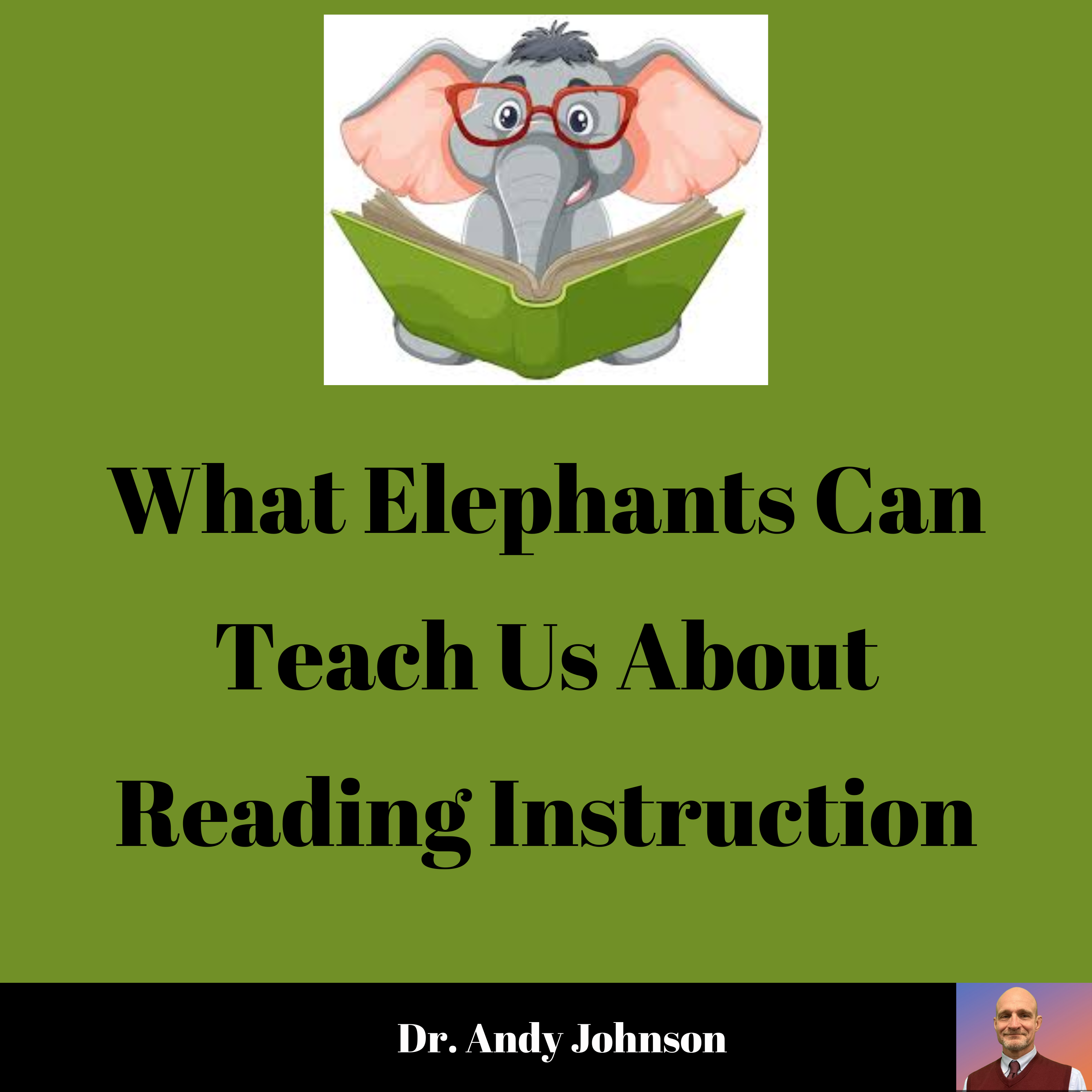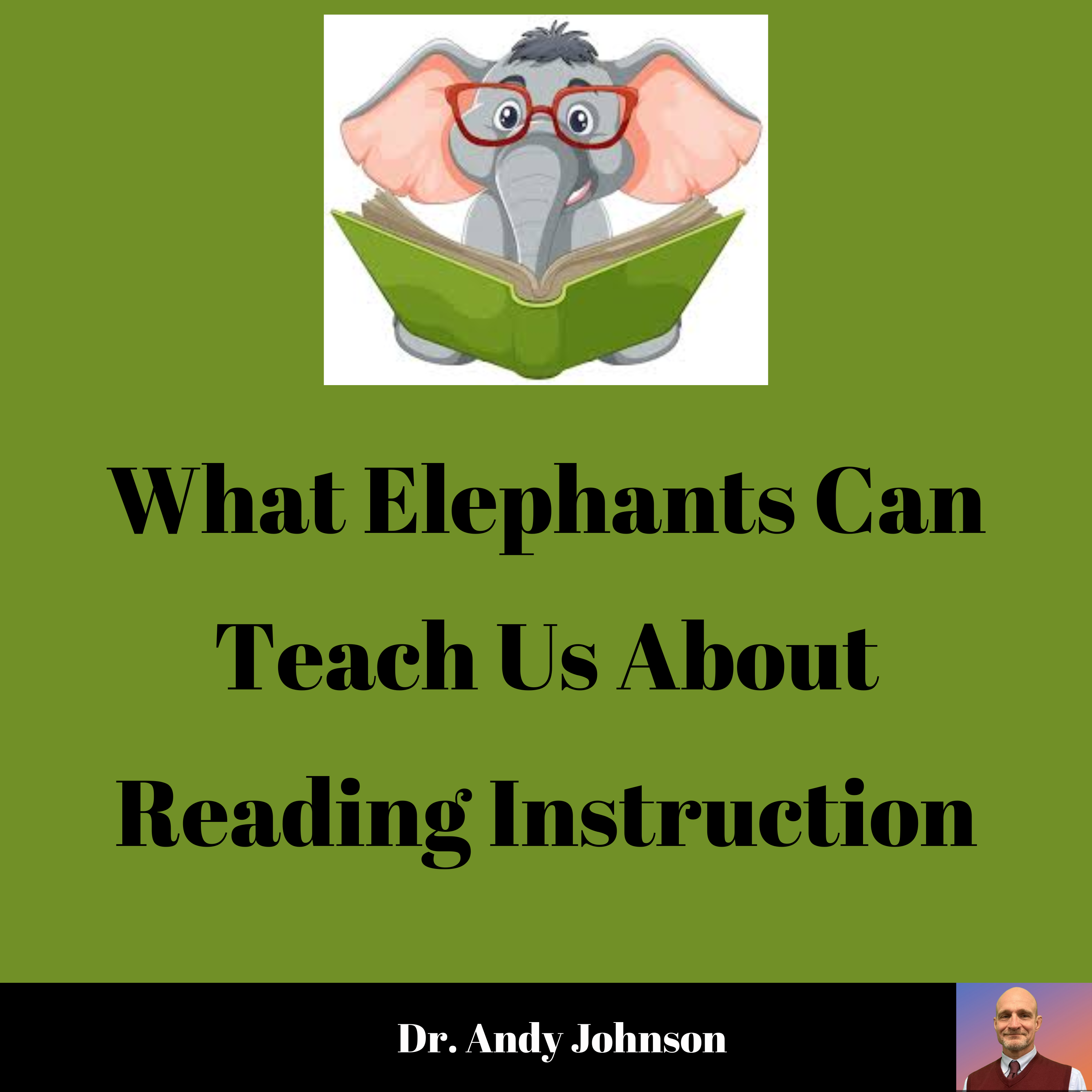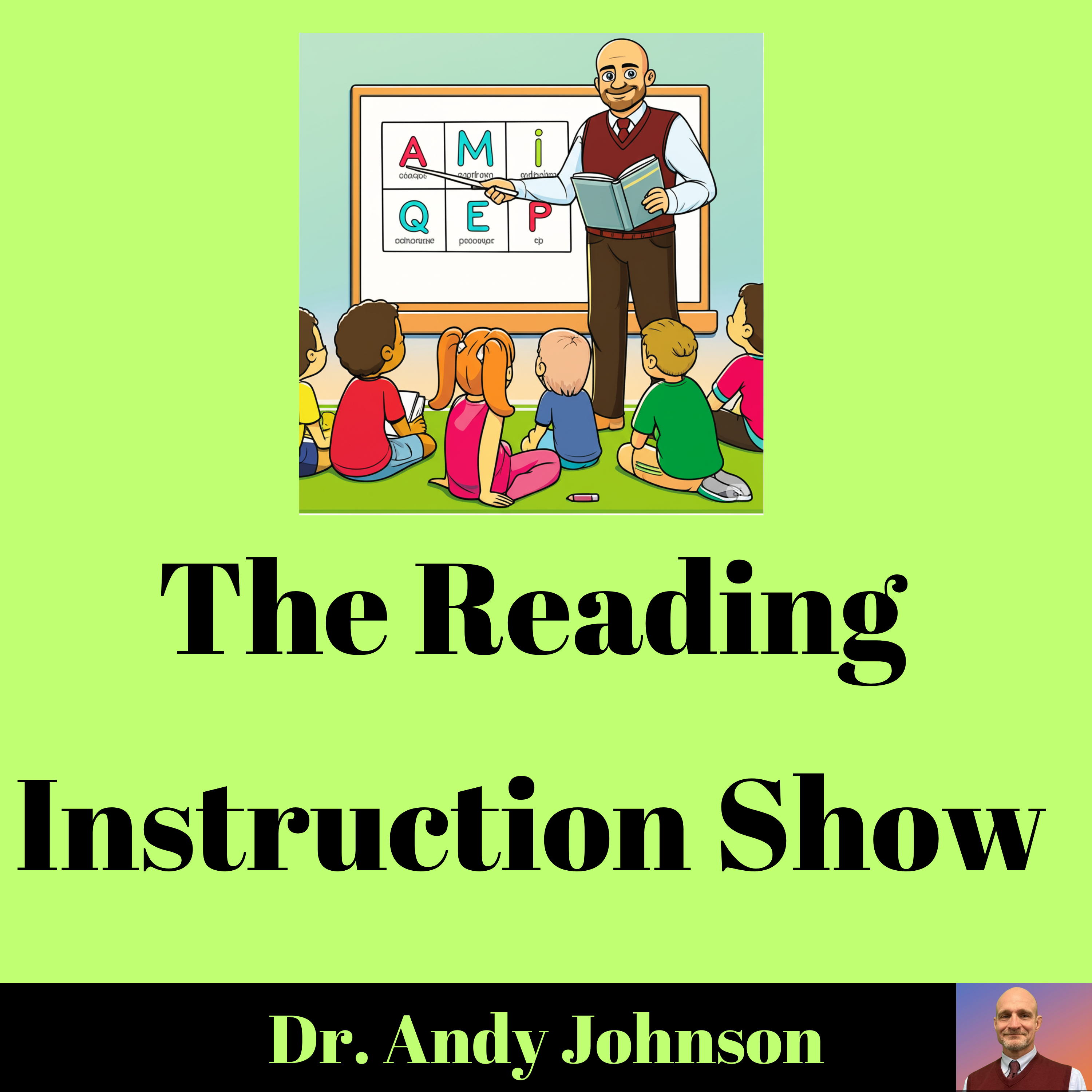The Reading Instruction Show
The Reading Instruction Show is a podcast about reading instruction (and other things) with a little bit of attitude. There is plenty here to inform and entertain all. And, by the way, I'm not trying to sell any books. I don't have any curriculum or programs to market. I don't accept speaking fees. And, I don't ever want to be a consultant.
Toadys, Transaction, and Reading Instruction

Toadys sometimes call themselves “consultants”. They promote methods and say things that just happen to coincide with the products and services being sold by Big Publishing. Quite a coincidence, yes? Right and wrong are not determined based on what’s right and wrong; rather, by what will sell.
The Ideology of Reading

Despite having the word “science” in their title, the proposals put forth by the SoR are not grounded in science at all, but in pseudo-science, I-think-isms, and anecdotal evidence. In fact, they are promoting an ideology.
Real science. Real science puts forth conclusions and recommendations based on a wide body of research. Real science uses systematic methods to collect and analyze data. Real science draws conclusions only from data collected. And real science uses blind peer review for an objective system of checks and balances.
Ideology. An ideology is a system of ideas and beliefs. An i...
Forward to the Past: Writer Over to People

One of the reasons why the Science of Reading people have been so successful is that they’ve been writing to the people over there. They’ve used stories and radio documentaries that sound very much like the way people talk. They’ve enabled the people over there to see and hear real people while our quiet very reasoned third-person voice has been ignored
Conversation with Daphne Russell

This is a conversation with another master teacher, Daphne Russell
Reading Wars and the Education Science Reform Act of 2002

There never was a reading war. A war assumes there are two armies meeting on a field of battle. This didn’t happen. But there was a reading coup. There was a hostile takeover of the field of literacy instruction by profiteers who saw public education as their own private ATM machine. This group of profiteers is part of the educational industrial complex which includes Cambium-Lexia Learning, Pearson Education, Cengage Learning, Hough Mifflin Harcourt, McGraw-Hill Education, Voyager Sopris Learning, TAL Education Group, Bright Horizons, and KinderCare Learning. Their armies of well-paid toadies (consultants) promise schools simple solutions to complex pr...
Cognitive Science and Reading

Neuroscience is a study of the nervous system including the brain, spinal cord, and neurons (NIH, 2025). The neuroscience of reading looks at how the brain functions during reading using imaging techniques to detect blood flow and electrical energy (Gotlieb, et al., 2022). Cognitive science is based on the word ‘cognition’ which means thinking. Cognitive science looks at human thinking (Robinson-Riegler & Robinson-Riegler, 2012). One studies the physical brain as it thinks and the other studies the thinking the brain does. But we can’t observe thinking directly. We can only observe the effects of thinking. Thus, both fields look at the effects of thi...
Orthographic Mapping: Weak or Robust Theory?

In this podcast, I try to make sense of orthographic mapping, a term invented by Linnea Ehri and introduced in Chapter 15 (Ehri, 2014). We’ll start with her definition:
“Orthographic mapping occurs when, in the course of reading specific words, readers form connections between written unit, either single graphemes or larger spelling patterns, and spoken units, either phonemes, syllables, or morphemes. These connections are retained in memory along with meanings and enable readers to recognize words by sight. An important consequence of orthographic mapping is that the spellings of words enter memory and influence vocabulary learning, the...
Everybody Uses Direct Instruction For Reading

The term “direct and explicit instruction” is often used to sell products or to persuade state legislators to make bad decisions. But everybody already uses direct instruction in some form. It's not the 'what' of direct instruction that is in question; it's the 'how' and 'how much' of direct instruction. T
Research to Support the Three-Cueing Systems

Our big human brains have evolved to become very efficient predicting machines (Hawkins, 2004). They are constantly accessing multiple data sources in order to give us a sense of what will happen next. Most of this is done at levels below our conscious awareness. For example, baseball players are able to run to the right spot to catch balls in the outfield because they can predict where it’s going to come down. Their big human brains instantly process a variety of information related to the sound of the bat hitting the ball as well as the height, speed, and an...
Orton-Gillingham: Behind the Pretty Words

The problem with Orton-Gillingham and similar for-profit products (Lindamood, Wilson Language Training, Barton System, etc.) is that they try to reduce teaching to an algorithm. An algorithm is a formula for solving problems in which you follow a step-by-step set of procedures (with fidelity) to achieve a specific outcome. In other words, by correctly following a prescribed set of steps in the specified order, you will be led to a predefined solution. Algorithms are useful in mathematics and computer science for calculation, data processing, and automatic reasoning. For teaching of any kind? Not so much.
However, Orton-Gillingham...
Defining the Science of Reading

When somebody askes you, “What’s the Science of Reading?” what do you say? Is it a process? Is it a set of strategies? An approach or method? A reading program? A group or organization? In this chapter, I will attempt to define the Science of Reading. And notice that I’m using capital letters. This enables us to differentiate between a science of reading as one of several sciences of reading and the Science of Reading as a proper noun or title,
The Science of Reading seems to refer to a general consensus related to the s...
What Elephants Can Teach Us About Reading Instruction

The really big point is this: It’s the semantic connections that are most important, not orthographic, graphemic, or phonemic connections. When you encounter the words ‘elephant’ you don’t connect with short /e/ words. You don’t activate words containing the /ant/ letter pattern or words with silent ‘ph’ blends. You connect with elephant things, regardless of the letter sounds or patterns.
Just hearing the word ‘elephant’ brought some of the elephant things in your elephant schemata to consciousness. Meaning that, if elephant were followed by the words sock, trunk, swallow, you’d be able to identify the word ‘t...
What Elephants Can Teach Us About Reading Instruction

The really big point is this: It’s the semantic connections that are most important, not orthographic, graphemic, or phonemic connections. When you encounter the words ‘elephant’ you don’t connect with short /e/ words. You don’t activate words containing the /ant/ letter pattern or words with silent ‘ph’ blends. You connect with elephant things, regardless of the letter sounds or patterns.
Just hearing the word ‘elephant’ brought some of the elephant things in your elephant schemata to consciousness. Meaning that, if elephant were followed by the words sock, trunk, swallow, you’d be able to identify the word ‘t...
The 3 Q-ing Systems: What it Isn't and Is

1. It’s not a strategy to teach students.
2. It’s not a pedagogical strategy that teachers use.
3. It doesn’t exclude phonics instruction.
4. It doesn’t encourage children to use picture clues to figure out words.
5. It’s not an approach to teaching reading.
6. It’s not a method of “decoding” printed text.
7. It’s not a “staple of early reading instruction”.
8. It’s not whole language
9. It doesn’t exclude explicit and systematic instruction.
Metaphysicial Perspectives

In his book, Global Mind Change (1989), Willis Harman describes three views of reality which he calls metaphysical perspectives. Metaphysical here refers to ontology or the question of the origins of the universe and the nature of reality. These perspectives are materialistic monism, dualism, and transcendental monism.
Belief Systems and Mental Sets

Why do we sometimes believe the unbelievable? Why is it our views are sometimes data-resistant? We like to think that reality determines our beliefs; however, at higher levels of belief systems, our beliefs determine reality. It's just the way of things.
Being and Becoming Responsible Consumers of Educational Research

There’s a difference between (a) reading research related to reading instruction and (b) reading what others have said about research related to reading instruction. It’s important to know the difference. When you read research articles, you get to evaluate the methodology and interpret that data. When you read what somebody else has written about research, you must trust that their evaluation is fair, and their interpretation of the data is accurate. You are reliant on the relative clarity of their lens.
So, far too often you’re left with people like me whose job it is to...
The Psycholinguistic Guessing Game

This is what Ken Goodman wrote in 1967:
“Reading is a psycholinguistic guessing game. It involves an interaction between thought and language. Efficient reading does not result from precise perception and identification of all elements, but from skill in selecting the fewest, most productive cues necessary to produce guesses which are right the first time. The ability to anticipate that which has not been seen, of course, is vital in reading, just as the ability to anticipate what has not yet been heard is vital in listening (Goodman, 1967, p. 127)
The term, psycholinguistic gu...
Whole Language and Evidence-Based Reading Instruction

In 1967, Ken Goodman published an article in Reading Research Quarterly with the title` Reading: A Psycholinguistic Guessing Game (Goodman, 1967). Here he applies Psycholinguistic Theory to the reading process. A pretty good article. I highly recommend reading it. However, two words have been pulled from the title ‘reading’ and ‘guessing’. These two words have become a Rorschach inkblot test for those who would disagree with or who don’t understand Dr. Goodman’s ideas. All sorts of dark and scary images have been projected upon them. These Rorschach-ian projections have been used for the last 50 years to misrepresent whole language and to discr...
Conversation with Claude Goldenberg

This is a wonderful conversation that I had with Claude Goldenberg. He has different ideas about things but he is a delight to talk with.
Interview with Joe Lockavitch
This is an interview with Joe Lackavitch
The Music of Balaned Literacy Instruction

As said throughout this book: if you are against something, you should at the very least know a little somebody about that which you are against. SoR enthusiasts are often against something that isn’t. In this case, they are against what they call balanced literacy, but it certainly isn’t balanced literacy. It turns out that they’re against their un-understanding of balanced literacy.
So let’s begin by defining our terms: Balanced literacy is merely balancing skills instruction with opportunities to practice those skills in authentic reading contexts. And what that balance is depends on the stud...
Whole-to-Part vs. Part-to-Whole Reading Instruction

Structured literacy is based on the idea that people learn complex things best by mastering each little part separately and then putting the parts together to create the whole. This is called part-to-whole instruction or Humpty-Dumptianism. Applied to reading, you would pull apart each of the eight strands of Scarborough’s reading rope, then teach all the little subparts related to each of the eight strands (one little subpart at a time) until all the eight strands and their corresponding subparts were mastered. The theory is that at some point, children would be able to put all the subparts ba...
Ropes, Humpty Dumpty, and Systems Theory

The SoR is based on the simple view of reading (Cervettie, et. al, 2020; Duke & Cartwright, 2021; Hoffman, 2017). According to this theory, skilled reading is a result of decoding and language comprehension (Gough & Tunmer, 1986) (see Figure 9.1). In other words, you decode each word (sound it out) and then listen to the decoding occurring in your head. What could be simpler than this? Yes?
Later iterations of this theory would change it slightly. Scarborough (2001) created his now famous reading rope based on this (see Figure 9.2). According to this theoretical model, skilled reading is like a rope comprised of two sets...
Ropes, Humpty Dumpty, and Systems Theory

The SoR is based on the simple view of reading (Cervettie, et. al, 2020; Duke & Cartwright, 2021; Hoffman, 2017). According to this theory, skilled reading is a result of decoding and language comprehension (Gough & Tunmer, 1986) (see Figure 9.1). In other words, you decode each word (sound it out) and then listen to the decoding occurring in your head. What could be simpler than this? Yes?
Later iterations of this theory would change it slightly. Scarborough (2001) created his now famous reading rope based on this (see Figure 9.2). According to this theoretical model, skilled reading is like a rope comprised of...
Little Timmy Learns to Read: A True Story

Phonics is important, but if that’s all you’re teaching, you limit students’ ability to recognize words and create meaning with print. And that is the end goal – to create meaning, not to fill out phonics worksheets, or pass end-of-unit tests, or sound out words in isolation
Chilren of the Code: Hard-Wired to Learn Reading

I was having a discussion with a fellow online who insisted that early reading instruction should consist primarily of direct instruction of phonics. His argument was that unlike learning to use oral language, learning to use written language is not a natural process for humans. “We’re not wired to learn these skills” he insisted. “Reading is a uniquely human invention,” he said. According to him, children, starting around age 5 or 6, need lots of direct instruction of letter-sound relationships in order to learn “the code”. When they learn the code, then they can read (or decode).
This is a commonly...
Defining the Science of Reading and SoR Research Standards

If you threw a rock into the middle of a pond but that rock was not a rock, can you still be said to have thrown a rock? Likewise, can a standard be said to be a standard if it is not standardized?
We know that science is a good thing, and using science in reading instruction is a good thing. But what exactly is meant by the “science of reading”? What exactly is the Science of Reading? Is it a noun? Is it a verb? Or has it become an adjective or perhaps a metaphor used to i...
Understanding Science, Research, and Research Methods

Basic terms are often misunderstood or misapplied by SoR advocates. My goal in this podcast is to bring a little more clarity to three important and often misunderstood terms: science, research, and research methods. In doing so, I hope to move the needle a little bit in helping you become more critical consumers of educational research
Science is both a noun and a verb. It’s a noun when it refers to a field or a system of knowledge within a particular area such as physics, chemistry, or zoology. It is a verb when it references the pr...
Dr. Elana Aydarova. Science of Reading Mythologies

Dr. Elena Aydarova is an Assistant Professor in the Department of Educational Policy Studies at the University of Wisconsin-Madison and a fellow with the National Education Policy Center. Dr. Aydarova’s research examines the interaction between educational policies, education reforms, and policy advocacy. She is an award-winning author of over 40 publications. Dr. Aydarova received postdoctoral fellowships from the National Academy of Education/Spencer Foundation and the American Association of University Women.
It’s Easier to Blame Teachers than to Fix Problems

If you can blame students, teachers, and colleges of education, we won’t see the social problems that impact learning. It’s much easier to blame teachers than to fix the actual cause of social problems. However, there is one thing of which we can be certain: If Cengage Learning, Houghton Mifflin Harcourt, McGraw-Hill Education, Pearson Education, and Scholastic could sell products to fix one of these social problems, that problem would be the cause of the next educational crisis.
The Ample Testimony of Reading

To fully understand this current reading “crisis” (which really isn’t a crisis at all), it must be seen in the context of similar “crises” occurring in the past (which weren’t really crises either). This current “crisis” is not the first reading crisis to come along (Aydarova, 2024; Berliner & Biddle, 1995; McQuillan, 1998; Thomas, 2024), and it certainly won’t be the last. And when this crisis runs its course, there will be a lull followed by another crisis, and then another, and then another. That’s because there will always be those willing to create the illusion of crises for political and economic gain (A...
Understanding the Limitations of Data and Research in Educational Research

The thing about research is that it doesn’t prove anything, at least not in the social sciences. There is no single research that conclusively proves anything once and for all about reading instruction. Research may support a hypothesis. It may provide evidence for something, show something, indicate something, or demonstrate something, but in the social sciences, research doesn’t prove things. The results may indicate, implicate, or illustrate, but educational research doesn’t prove things.
SoR advocates often claim that there is a “proven science” of reading. But when working with variable human beings interacting in variable s...
The Reading Crisis the Isn't: Context Matters

Words are always encountered in the context of a sign, product, or sentence. In the same way, to be understood, data must be understood and evaluated in the context in which it was collected. Reading research can only be fully understood in the context of a wider array of research studies within a theoretical perspective. And theories must be understood in the context of a paradigm. The Science of Reading movement must be understood in the greater social and political context and in the context of past educational reform movements (NCLB).
Reading Instruction in the Context of Crisis

If you were to consume a lot of popular media today related to education, you would be led to believe that there is a reading crisis. Apparently, it’s all “deeply concerning”. I can’t help but wonder if this current crisis is a new crisis or an extension of an old crisis. In 1983 the United States was said to be “at risk” because of a crisis that started in 1963 (National Commission on Excellence in Education, 1983). Was that crisis ever resolved? Is this crisis an extension of that crisis? Or is it brand new crisis?
In 1983 teachers were told th...
LETRS Does Not Meet Basic SoR Standards

Conclusions
The Science of Reading promotes the exclusionary use of strategies and practices that have been shown to be effective using controlled experimental or quasi-experimental research conducted in actual classroom settings. Further, this standard should be the basis upon which decisions should be made about reading instruction and reading policies. LETRS fails to meet this basic SoR standard.
LETRS: Weasels or Engery Efficient Light Bubls

This podcast examines Language Essentials for Teachers of Reading and Special (Lexia) or LETRS. I wanted to find the “reliable, trustworthy, and valid evidence” that “has demonstrated” that LETRS had “a record of success in increasing students' reading competency in the areas of phonological and phonemic awareness, phonics, vocabulary development, reading fluency, and reading comprehension”. I was eager to start reading all the research showing that LETRS professional development had a demonstrated record of success in increasing students’ reading competency. Specifically, I was looking for three things:
1. A vast, interdisciplinary body of scientifically-based research linking LETRS to improved teach...
Of Mice and Minnesota: Mouse World and Reading Instruction

Yes, state legislatures have the right to impose statues. Absolutely. But teacher's unions have the right, and the moral obligation to respond. The Read Act and other SoR mandates strip away teachers' right and obligation to provide the type of instruction that is best for their mice-students. They’re forcing teachers to spend hours in state-mandated professional development programs, paid for by state tax dollars. They force schools to purchase state-mandated reading programs. The teaching profession is being de-professionalized and you say nothing. Teachers are now expected to open the teachers’ manual and follow the script. We don’t have m...
Emily Hanford is the Alexa App of Reading Instruction

A fact may be true. But the truth of the fact is limited to the context in which it was found. Outside a meaningful context, the fact may mean something different. Also, facts without context can be misapplied and misunderstood. This is true of many of the facts used to support SoR structured approaches to reading instruction known as structured literacy. It is a house built on a series of decontextualized facts.
The New Reading Anti-Science Movement in Minnesota

This is an interview with a Minnesota reading Professor. Ideology has replaced science when it comes to reading instruction in Minnesota.
